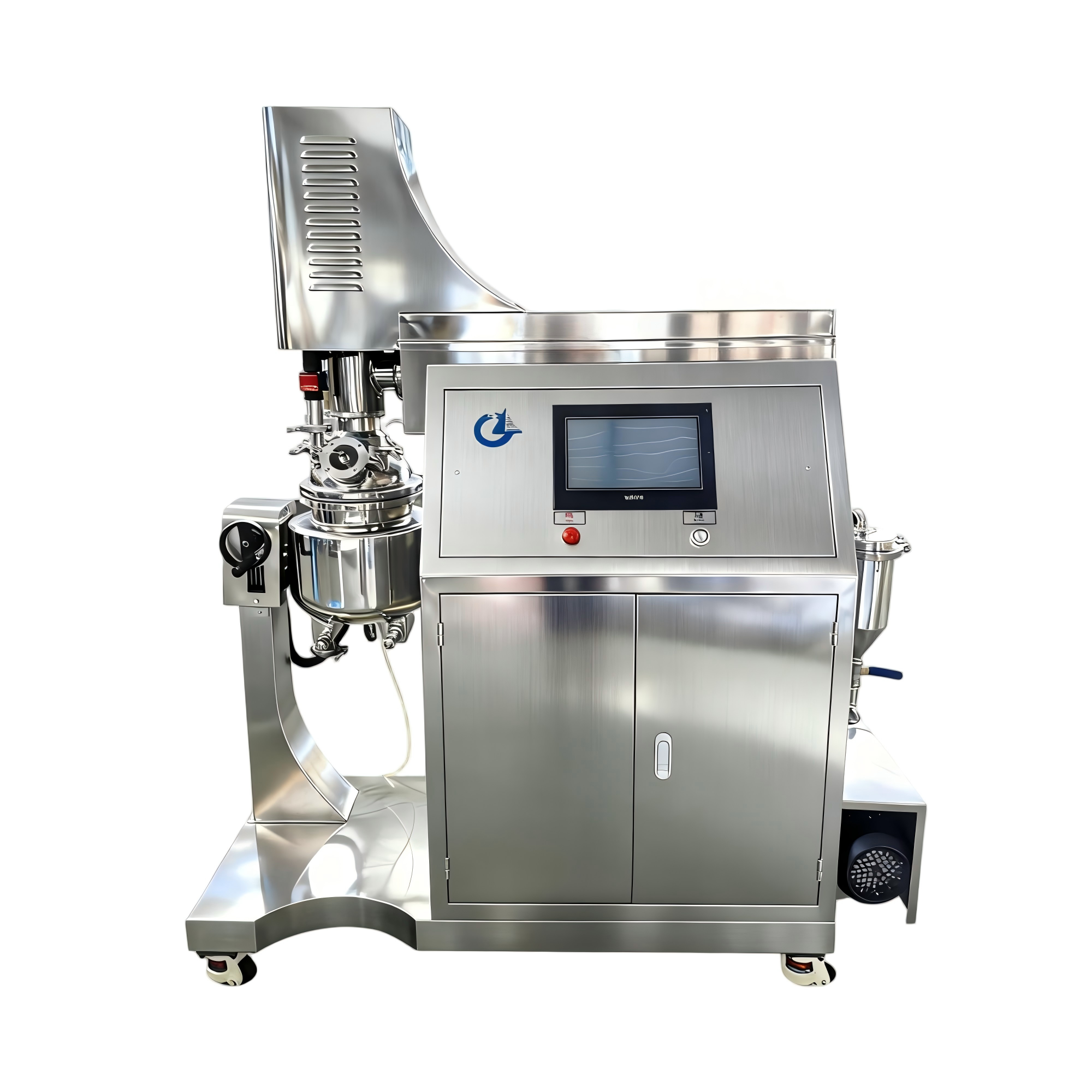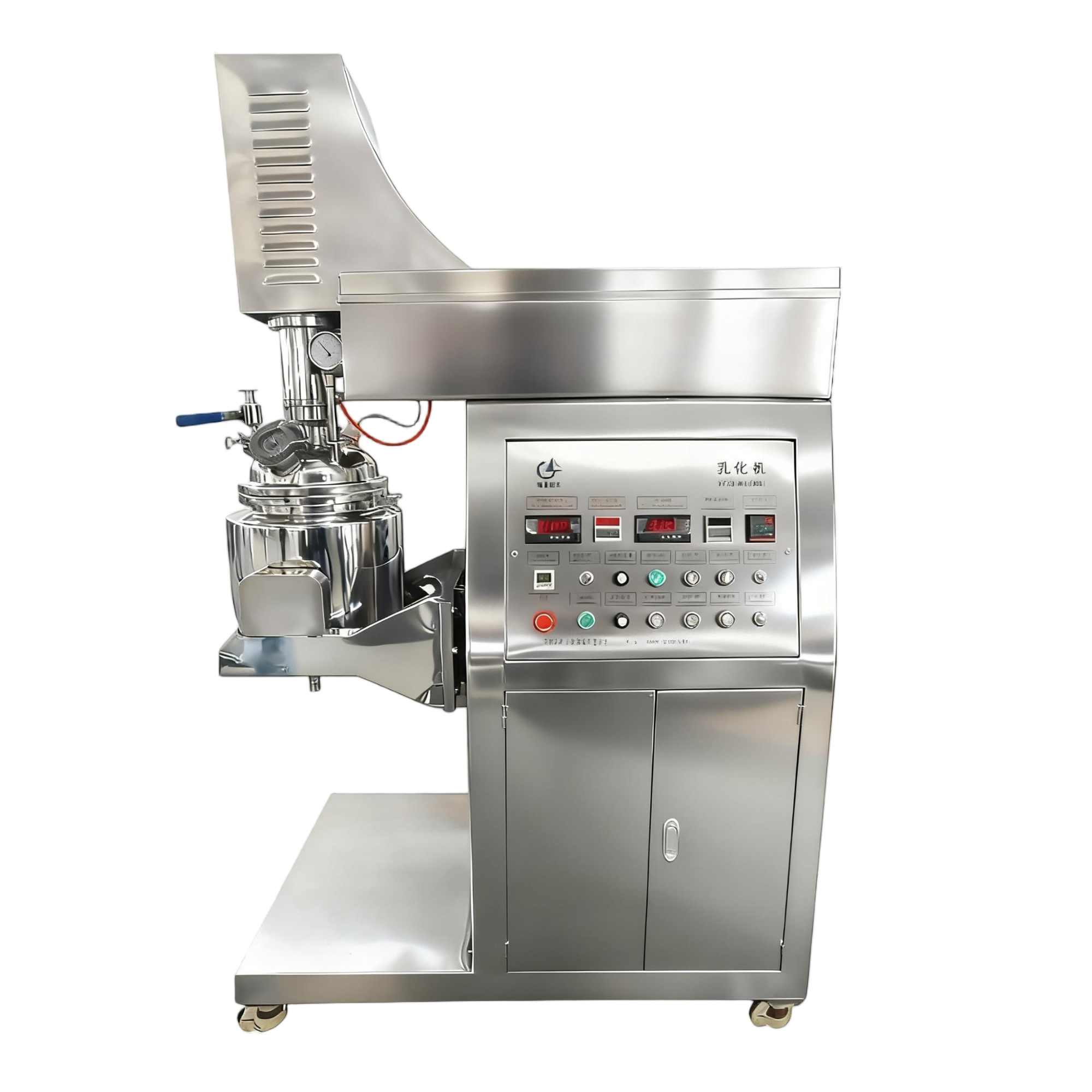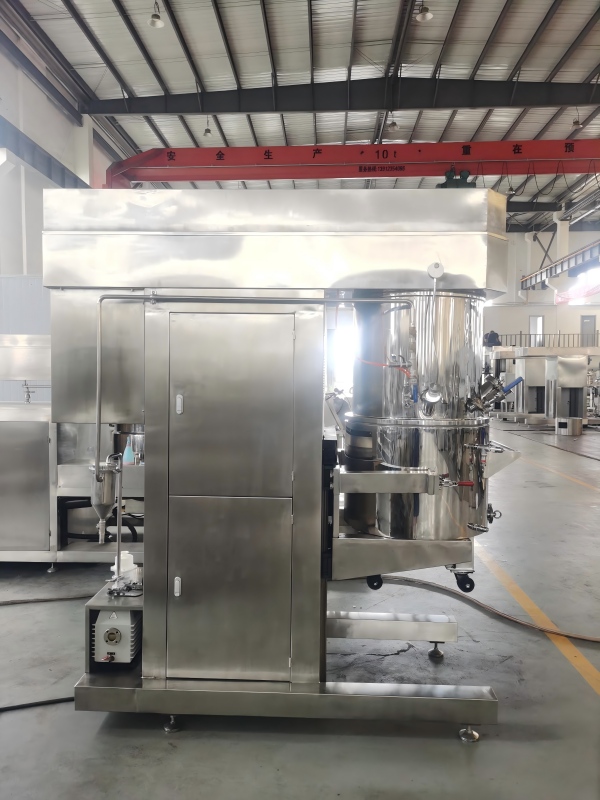Emulsifier Purchasing Skills and Selection Key Points
The function of an emulsifier goes beyond mere emulsification. Thanks to its unique shearing action, it crushes and impacts powder and granular materials in liquids, ultimately refining them to the desired particle size. This allows solid substances to fully blend into liquids and form relatively stable suspensions—a process known as "dispersion." Similar to emulsifiers, adding dispersants enhances the stability of these suspensions. When a solid material can be completely dissolved in a liquid through prolonged contact, the small particles formed by shearing and impact will dissolve much faster, as their specific surface area increases exponentially.
Factors Affecting Dispersion and Emulsification Effects (Equipment Perspective)
Emulsifier Structure: Emulsifiers are generally classified into batch-type and in-line (pipeline) types. In-line emulsifiers deliver superior emulsification results, ensuring full material dispersion and emulsification with high efficiency. IKN high-shear emulsifiers adopt the in-line emulsification method.
Shear Rate: The shear rate is a core parameter of emulsification equipment. Typically, a higher shear rate yields better dispersion and emulsification effects, though this should be determined by specific material processes. IKN emulsifiers use belt-driven acceleration, with a minimum speed of 9,000 rpm—three times that of standard domestic emulsifiers—and a maximum speed of 21,000 rpm.
Processing Time: Longer residence time of materials in the chamber and more processing cycles generally result in better dispersion and emulsification. IKN emulsifiers feature a vertical split structure design, enabling shorter operation time.
Precision of Emulsifying Head: Traditional emulsifiers use a single-layer emulsifying head with rough processing. In contrast, IKN nano-homogenizing emulsifiers adopt a three-layer emulsifying head with smaller gaps and higher precision, delivering superior emulsification performance.

Key Considerations for Emulsifier Selection
Selecting an emulsifier requires consideration of multiple factors, such as model, price, and on-site space. Beyond these, the most critical aspects are evaluating the equipment’s quality and output capacity. Quality directly impacts production efficiency and service life, while output capacity should align with customer demand. Thus, prioritizing quality and output is essential when purchasing high-shear emulsifiers.Quality is also a top priority for manufacturers, as it serves as a key guarantee for high sales volume. However, the market is mixed with unethical suppliers, making it crucial to navigate wisely to find the right equipment.
1. Conduct Comprehensive Due Diligence on Manufacturers
Avoid prioritizing low prices; instead, focus on product reliability and quality. Before purchasing, screen manufacturers—similar to shopping online—assessing their qualifications, credibility, pricing, sales volume, and customer reviews. Low-priced products without sufficient profit margins often lack technical support, quality assurance, and after-sales service. Opting for cheap equipment may save money initially but proves costly in the long run. It is recommended to thoroughly evaluate a manufacturer’s experience, reputation, and market feedback before making a decision.
2. Conduct Vertical and Horizontal Comparisons for Equipment Selection
Output capacity is directly linked to the emulsifier model. Vertically, larger models generally offer higher output, so select a model that matches your specific needs. Additionally, due to technological differences, emulsifiers of the same specification may vary in production capacity. Conduct horizontal comparisons across multiple manufacturers for the same model to choose equipment with higher capacity, which will improve future production efficiency and create greater value for your business.
News
- Latest News
- Solutions
- FAQ
Recommend Products
-
 5L Vacuum Emulsifying Homogenizer Mixer
5L Vacuum Emulsifying Homogenizer MixerThe 5L vacuum emulsifying mixer is a device designed for emulsifying and mixing various substances in a vacuum environment. This equipment is equipped with a mixing tank with a capacity of 5 liters and is widely applied in industries such as food, pharmaceuticals, cosmetics, and pesticides.
-
 5L PLC-Screen Vacuum Emulsifying Mixer
5L PLC-Screen Vacuum Emulsifying MixerThe 5L PLC-Screen Vacuum Emulsifying Mixer is a device designed for emulsifying and mixing various substances in a vacuum environment. This equipment is equipped with a mixing tank with a capacity of 5 liters and is widely applied in industries such as food, pharmaceuticals, cosmetics, and pesticides.
-
 10L Vacuum Emulsifying Homogenizer Mixer
10L Vacuum Emulsifying Homogenizer MixerThe 10L Vacuum Emulsifying Mixer is a device used for emulsifying and mixing various substances in a vacuum environment. It is commonly used in industries such as food, cosmetics, and pharmaceuticals.


 English
English Russian
Russian French
French Spanish
Spanish Portuguese
Portuguese Korean
Korean Japanese
Japanese Thai
Thai
![Installation, Commissioning, Maintenance and Upkeep of 20L Double Planetary Mixer [Technical Version]](/web/uploads/image/20251115/Rz1O1nQrou307600Q66XxAP07No478kl.webp)




